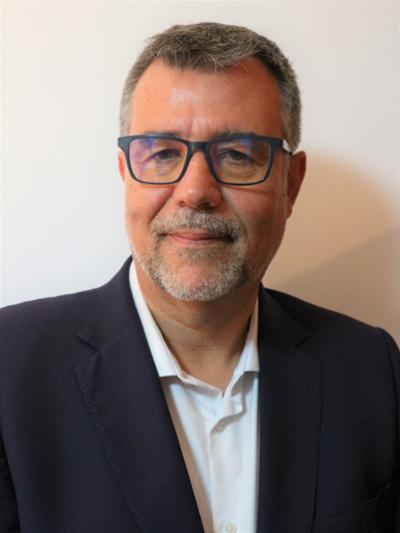

Rafael Marqués (Asepal): "The 10% increase in the accident rate highlights the need to improve preventive measures"
Rafael Marqués, vice-president of Asepal, Association of Personal Protective Equipment Companies, considers the more than 10% increase in the number of occupational accidents in 2022 to be worrying and states that the figure highlights the need to improve preventive measures, safety and awareness in the workplace to an even greater extent than we have done up to now. He also explains the main challenges for the occupational safety sector in 2023.
The number of occupational accidents in Spain amounted to 1.19 million in 2022, 10.4% more than the previous year. How do you assess these figures?
We consider these figures a worrying sign and a call to action for the entire Personal Protective Equipment (PPE) sector that ASEPAL represents and for Spanish companies in general. We are talking about a 10% increase in occupational accidents, and we have to be aware that this figure represents damage to the health of many workers - people who will have problems for the rest of their professional and personal lives, or who have even died. This is a fact that highlights the need to improve preventive measures, safety and awareness in the workplace to an even greater extent than we have done up to now.
All ASEPAL members strive to promote innovation and the development of products and solutions that contribute to reducing these numbers and improving the quality of life of workers. But the key is to apply a comprehensive approach to occupational risk prevention, including a proper risk assessment, the selection and appropriate use of PPE and the promotion of a culture of health and safety at work so that the end user, as far as PPE is concerned, uses his or her certified PPE as a matter of routine when collective protection is not possible.
In this regard, we intend to reinforce joint work with the Government and regulatory bodies, companies and trade union organisations to improve training and awareness of safe PPE in order to reverse this trend and ensure a safer and healthier working environment.
What new occupational health and safety measures are needed to reduce the accident rate?
The first measure has to be awareness, education, promoting a culture of prevention and of taking care of ourselves so that we can enjoy our personal lives with our loved ones. I believe in raising awareness and that the culture of prevention should begin at school, at an early age, because in the end all children will work in a profession in which they will encounter risks from which they must protect themselves. And of course, in order to reduce the number of accidents at work now, it is essential to implement measures that address risk assessment, education and training of employees and coordination with employers, who also play an important role in the use of appropriate PPE.
The second step is to carry out inspections and follow-up of incidents. In the past, ASEPAL has collaborated in the training of labour inspectors on PPE, and we believe that this collaboration should be extended to the entire Labour Inspectorate and be an ongoing process, because the laws and regulations on the different types of equipment are constantly being updated.
What role should training and occupational risk prevention play in industry?
For ASEPAL, right now, it is clear that training is the key way to prevent occupational accidents. The same is true of employers, as we were saying, and we have found that there are two moments where better training in industry would play a crucial role: training on the selection of personal protective equipment, but also training on how to maintain it so that it fulfils its function and is as comfortable as possible. In addition to complying with the law, it can also be seen as an investment to increase the productivity and competitiveness of companies.
Today, it is possible to take advantage of new technologies - such as virtual reality or augmented reality - to provide workers with a safe immersion in what will be their working environment and to ensure that they know how to fulfil their tasks properly and in accordance with the correct procedures.
I consider it vitally important to refresh training and accreditation on a regular basis, both for users and prevention technicians, so that they are better qualified and therefore less likely to have accidents.
What are the main challenges facing the occupational safety sector in 2023?
There are many, but I would like to highlight two that have an impact on PPE: achieving eco-responsible equipment that protects people and the environment, using recycled and recyclable materials that have the least possible impact on the environment in their manufacturing process and at the end of their useful life, but, and this is vital, that maintain or improve the protection of the worker.
Secondly, adaptation to the digital transformation and changes in work organisation, including the boom in remote working and flexible working that change the traditional pattern of prevention. We must make digitalisation work in our favour, promoting this technological change, which has an impact both on the environment and on the efficiency of processes, in order to protect, minimise time losses and ensure that all players involved in prevention have all the documentation and procedures necessary to reduce the accident rate to a minimum.





